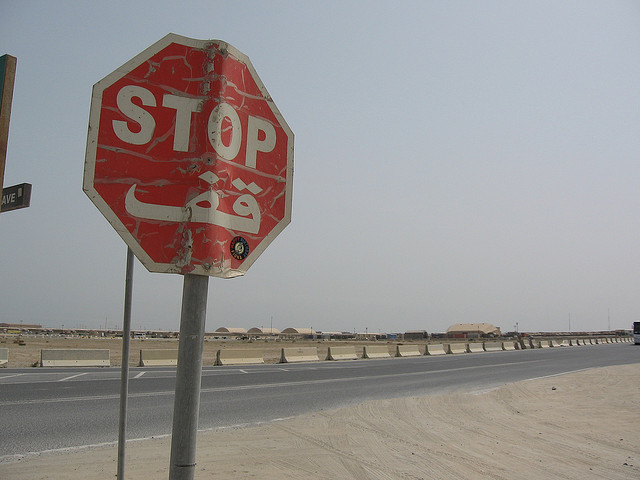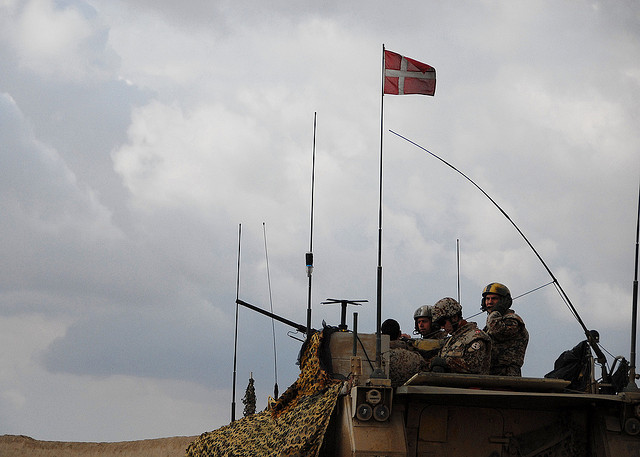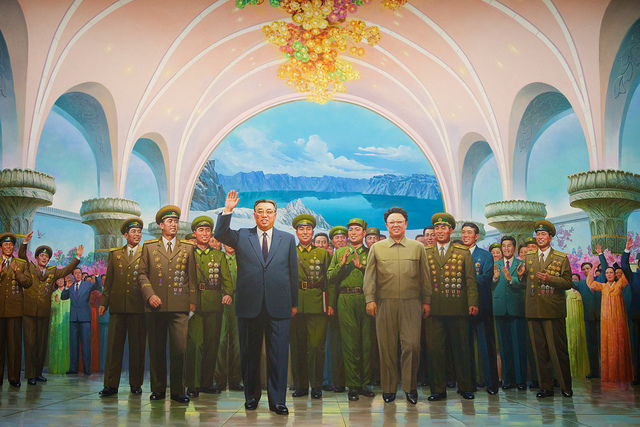This week’s graph isn’t news in its own right. Moore’s Law—which exists in various formulations—concerns the rate of increase in computer performance. It’s well known and has been around for almost fifty years now. But the effect it describes has already had a profound effect on pretty much everything we do and will have an even more dramatic impact in the future. And defence technologies won’t be exempt from its impact.

To be a bit more technical, Moore’s Law in its original guise concerned the number of transistors in an integrated circuit. In crude terms, it describes how much computing power you can stuff into a given volume. Gordon E. Moore first made his observation back in the relatively early days of mass produced computers, and it’s been argued at times that the rate of increase will eventually taper off. The laws of physics can’t be defied and there are theoretical limits that will one day bring further development to a halt, but we aren’t there yet. And if quantum computing produces practical mass market devices (which I’d be willing to place a small bet against, but that’s another story), computing power will bound ahead for decades to come.
In any case, there’s a consensus that we have at least twenty more years on the current trend line. It’s worth contemplating what means. Moore’s law describes exponential growth in the number of transistors on a microcircuit, with a doubling time of around two years. The actual performance of computers actually increases even faster than that because the transistors are also become faster as well as more numerous.
That means devices today are roughly a thousand times more powerful than those of 20 years ago. In 2033 contemporary devices will be a thousand times more powerful than todays (and so a million times more than those from 1993). The flexibility, power and connectivity of the iPad I’m writing this blog piece on was inconceivable twenty years ago. Twenty years from now, there will be devices as far ahead of it as it is ahead of the 486 chip based computer that was state of the art in 1993.
There’ll be applications of future machines that we can’t predict today—or at least I can’t. (Which might of course explain why I work for ASPI and not for Apple…) But there are some applications that I think are predictable, and some of those are in the defence area. One of them is the possibility of autonomous robots—machines that have enough processing power to sense the world around and make their own decisions. Clint Arizmendi wrote about those on The Strategist last week. Another area where computing power and robotics could come together to have profound military effects is the detection of platforms that rely on stealth for effectiveness, such as aircraft and submarines.
Stealth aircraft like the F-35 Joint Strike Fighter are designed to be hard to detect because of a combination of absorbing some radar energy and reflecting radar signals away from the radar producing them. Submarines do it a little differently because they start with the advantage of being in a medium that is opaque at many wavelengths and is noisy. The use of sound waves is the usual way of trying to detect a submerged boat—either by listening for the submarine’s own noise (passive sonar) or by putting sound into the water and listening for reflections (active sonar). Submarines use a combination of a coating that absorbs sound and having quiet onboard systems that radiate only low levels of acoustic energy, which is rapidly drowned out by ambient noise from other, usually natural, sources.
In principle, given enough processing power and enough sources of data, even low power signals can be extracted from background noise. And that’s where Moore’s Law and robots come in. Future processors will be faster and more powerful, and will be able to process large quantities of data fast enough to have a much better detection capability against quiet submarines or low radar signature aircraft. By having multiple sources of radar (or sonar) energy in different locations combined with multiple detectors also in different locations, the trick of reflecting radar away from the original source suddenly becomes much less effective. Using cheap drones to carry these sensors in an airborne grid could make life much more difficult for stealth aircraft.
In the submarine case, a fleet of small unmanned platforms (either remotely controlled or autonomous) could cover a large area of ocean. If each one carried a simple sonar receiver and transmitter and a means of communicating what it hears to some central processing unit, a submarine trying to cross the area will be faced with a very difficult problem—it will never know where the next detector might be, or where the next sonar ‘ping’ might come from. There’ll be no trouble moving data around either, because bandwidth is also increasing exponentially. An Australian company is working on small unmanned vessels which generate their own energy from solar panels, wind and wave motion. To my eye, it’s the sort of technology that could revolutionise anti-submarine warfare.
In the future, the sky and the ocean could be full of cheap and numerous detectors, processors and communication links. As the American Chief of Naval Operations Admiral Greenert observed last year (p. 18):
The rapid expansion of computing power also ushers in new sensors and methods that will make stealth and its advantages increasingly difficult to maintain above and below the water… With better processing in the future… weak, fragmented signals can be combined to create actionable target information.
In short, the very expensive stealthy platforms of today will have their work cut out for them staying hidden. The F-35s and future submarines we are going to invest many billions of dollars in will find themselves in a much more challenging environment than today during their expected lifespan of 30–40 years.
Andrew Davies is a senior analyst for defence capability at ASPI and executive editor of The Strategist. Image courtesy of Wikimedia Commons.
 Here’s Australia’s Antarctic scorecard:
Here’s Australia’s Antarctic scorecard:





